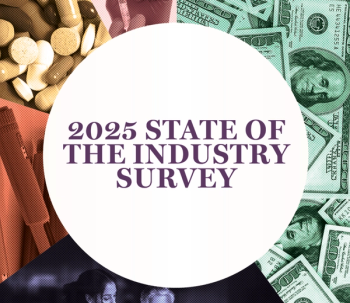
Epidemics Within the Pandemic: Shifting Priorities and Opportunities for Addressing Opioid and Mental Health Crises During Covid-19
Deaths by suicide and by substance use disorders have reached epidemic proportions, creating the tragic “perfect storm” of epidemics within a pandemic. A survey conducted by PRECISIONvalue of population health priorities among health systems and health plans since the onset of Covid-19 suggests that while mental health conditions have risen in priority, opioid use disorders have become alarmingly deprioritized.
The global Covid-19 pandemic has further exposed and exacerbated the fractures within our healthcare and social delivery
This is especially concerning given a Kaiser Family Foundation (KFF) report suggesting that a third of U.S. adults now report symptoms consistent with an anxiety and/or depressive disorder. More specifically, a KFF analysis of U.S. Census Bureau survey data published in June 2020 indicated 36.5% of U.S. adults reported anxiety or depressive disorder symptoms, a troubling increase from the already substantial statistic of 11% in
Also of grave concern is the potential for a dramatic increase in “deaths of despair”— deaths by suicide, alcohol, or other substance misuse commonly associated with the extreme distress resulting from natural disasters and
Recently, the U.S. Centers for Disease Control and Prevention (CDC) released its own findings detailing the damaging impact of the Covid-19 pandemic on mental health in vulnerable populations. Close to 11% of adults seriously considered suicide during June 2020, according to CDC data. In addition, the risk for suicidal ideation was heightened among respondents between ages 18 and 25 (25.5%), Hispanic respondents (18.6%), Black respondents (15.1%), unpaid adult caregivers (30.7%), and
Without rapid and robust intervention, it is estimated that an additional 75,000 lives could be lost in the United States alone to alcohol and drug misuse and suicide associated with
Given the present epidemiologic climate, it is not surprising that addiction experts consider the Covid-19 pandemic a risk factor for substance abuse relapse, leading the
In short, most Americans or someone they know has or will be impacted by behavioral health conditions associated with Covid-19 stressors, and some populations, such as those with pre-existing behavioral health conditions, marginalized communities of color, families living in poverty, and those previously traumatized by violence or natural disaster, may be particularly vulnerable to Covid-19
As the world continues to grapple with the Covid-19 pandemic, it is important to take a closer look at our nation’s health systems, integrated delivery networks and health plans, and the resulting re-prioritizations that have occurred in addressing behavioral health concerns during the pandemic. This article will share recently collected survey data on the shifting priorities of health plans and health systems pertaining to behavioral health conditions since the onset of Covid-19. The paper further offers some observations and suggestions for opportunities for plans, delivery systems, and pharmaceutical manufacturers to address these “epidemics within a pandemic.”
Survey Results
In April 2020, PRECISIONvalue used its RapidPulseTM tool to survey healthcare access decision makers. Objectives were to gain insights into the current and expected future impact of the Covid-19 pandemic on payers’ and health systems’ population health priorities and how these priorities are affecting administrative, care management, and population health practices during the Covid-19 pandemic. Included in the survey were questions about behavioral health conditions and relevant care management and population health practices. Respondents (N=30) represented health plans (n=16) and health systems (n=14) and comprised medical, pharmacy, quality, and population health directors, providing services for an estimated 95 million
Not surprisingly, the majority of survey respondents (67%) reported that mental health conditions have risen in priority since the onset of Covid-19. However, an alarming 80% of respondents indicated that opioid conditions had decreased in priority since Covid-19 began. Taken together with the AMA’s report of increased opioid
Opportunities also exist during the pandemic for population health management collaboration among health plans, health systems, and pharmaceutical manufacturers. Survey results found that health plans and health systems indicated current or planned collaborations, or willingness to collaborate with pharmaceutical manufacturers on areas such as medication adherence management (87%), patient outreach/engagement (83%), and supporting quality
Healthcare delivery is experiencing a crisis of tremendous magnitude, and given that other conditions, notably infectious disease and respiratory conditions, have risen in priority since the onset of
Opportunities for Stakeholders
Access
Although 76% of Americans think mental health is as important as physical health, lack of awareness of and limited care options, cost, stigma, and wait times all create barriers to behavioral
- Patients with substance use disorders must have access to effective, evidence-based treatments such as methadone and buprenorphine, and many providers are modifying their practices to support continuity of care and optimized outcomes for these patients. Greater flexibility is required to appropriately provide take-home medications, alternative home delivery, and telehealth services for patients, and guidance may be taken from the
American Society for Addiction Medicine (ASAM) and theSubstance Abuse and Mental Health Services Administration (SAMHSA) . - Similarly, individuals receiving long-acting injectables (LAIs) for behavioral health conditions merit additional consideration due to the elevated stressors often experienced by psychiatric patients associated with the pandemic. This has been noted by the American Psychiatric Association, which has issued Covid-19 guidance encouraging “hospitals and other facilities to include the ongoing use of LAIs for patients with high-risk chronic illness as a necessary
procedure .” - Health plans can encourage access through activities such as:
- Reviewing the utilization of mental health and addiction services and parity
practices to ensure that adaptations designed to facilitate expanded access to services and medications for physical health conditions are also being leveraged to expand access for behavioral healthcare and therapies. Examples include patient outreach (eg, well-being checks), virtual visits, and expanded care management programs. - Aggressive monitoring of network adequacy during the pandemic to promote access to culturally competent care, access to behavioral health services such as medication-assisted treatment (MAT), and monitoring of behavioral health bed capacity, which may be further strained due to Covid-19. Special consideration should also be given to the needs of children and youth with special healthcare needs, and to their parents, all of whom may need additional support during the
pandemic . - Promotion of electronic newsletters, blogs, and webinars specific to managing stress associated with Covid-19, and promotion of no-charge 24/7/365
helplines (eg,National Suicide Prevention Lifeline at 800-273-8255) for individuals and families experiencing distress due to behavioral health conditions. - Payment for telehealth services and encouraging aggressive use of telehealth for outreach with individuals at greater risk for Covid-19 and/or behavioral health conditions.
- Reviewing the utilization of mental health and addiction services and parity
Analytics
Across the care continuum, predictive analytics have been found to contribute to population health management, improving costs and
- Analytics are effective and should be used in substance abuse patient identification. This can mean use of an EHR deploying predictive analytics and algorithms based on common patient characteristics, demographics, and social determinants of health.
- Another
study featured in theAmerican Journal of Psychiatry sought to create and validate models using EHRs to predict suicide attempts and deaths by suicide following an outpatient visit. Combining EHR data from 7 large health systems and results from a depression questionnaire, the study developed a predictive analytics model that improved suicide risk prediction in the 90 days following a mental health visit. The team found that in the 90 days following a visit, suicide attempts and deaths among patients in the top 1% of predicted risk were 200 times more common than among those in the bottom half of predicted risk. Accurate risk stratification deployed with risk-based care pathways and outreach can support systems’ suicide prevention and continuous quality improvement strategies. - Pharmaceutical manufacturers can support plans and health systems with their medication adherence efforts through development of analytics tools, templates, and other innovations to facilitate identification of patients at high risk for non-adherence or medication/treatment
abandonment .
Amplification
Despite all the advances in behavioral health education and treatment, there is still a significant public stigma and even self-stigma around behavioral health issues. These stigmas can contribute to gaps in seeking medical care and resources and lead to negative outcomes, such as worsening mental health, substance abuse relapses, and potentially suicide. Below are steps stakeholders can take to amplify stigma-busting messages and boost support and coping skills.
- Behavioral health literacy campaigns, peer support services, and meaningful contact with caregivers and with peers experiencing similar health issues can serve as valuable resources for individuals desiring augmented support, for those hesitant to receive professional support, or for persons having difficulty accessing services. Organizations seeking to encourage behavioral health literacy and peer support may wish to refer to examples such as:
- Active Minds, which uses a peer-to-peer approach to encourage young adults and networks to learn about, discuss, and seek help for mental health issues just as they would for a physical issue. The organization is present in more than 800 schools, communities, and workplaces in the United States and also offers online resources and
speakers . - Mental Health First Aid, a global evidence-based program, helps equip participants with skills to identify, understand, and respond to signs of mental health and substance use conditions, including ways to support someone who may be experiencing a crisis and connecting them with appropriate care. The training program is not limited to behavioral health clinicians; it is open to individuals wishing to gain evidence-based skills to provide support for others in distress. Mental Health First Aid’s website offers resources on behavioral health topics, and connects people to
training .
- Active Minds, which uses a peer-to-peer approach to encourage young adults and networks to learn about, discuss, and seek help for mental health issues just as they would for a physical issue. The organization is present in more than 800 schools, communities, and workplaces in the United States and also offers online resources and
- CMS and
SAMHSA have noted that using mobile apps during Covid-19 potentially increases access to professional and peer support, surmounts barriers to care, and may support coping skills. Individuals and organizations searching for apps may find theOne Mind Psyberguide and theMindTools.io websites to be valuable resources, offering information such as technical details, ratings, and reviews for selected apps, including apps for conditions such as mood and substance use disorders. - All stakeholders—health systems, health plans, patient advocacy organizations, and pharmaceutical manufacturers—have the opportunity to integrate information regarding stress and coping tips within their patient and caregiver support resources. Because patients with comorbidities are often more vulnerable to behavioral health conditions and to Covid-19, integration should occur across therapeutic areas. Stress-reducing information across therapeutic states by multiple stakeholders can contribute to de-stigmatization of behavioral health conditions and amplification of messages to promote positive coping.
- All stakeholders also have opportunities to clearly communicate information based on science and facts to reduce the spread of misinformation and curb the growth of our current
infodemic . Cultural differences among communities may impact understanding and responses to healthcare messaging and may need to be modifiedaccordingly .
The Covid-19 pandemic has further exposed the fragmentation of the American healthcare and social delivery systems, particularly relevant to care for mental health and substance use conditions. In the United States, deaths attributable to suicide and to substance use disorders exist as epidemics within the Covid-19 pandemic. Survey data suggest that overburdened health systems and health plans may be deprioritizing population health efforts to address opioid use disorders, while prioritizing care for mental health conditions, further straining a long-overtaxed mental health delivery system.
Yet, access to evidence-based behavioral healthcare is vital to advancing the resilience and responsible health behaviors required during the pandemic, necessitating the acceleration of behavioral and physical health integration. Multistakeholder, strategic focus upon the Three A’s—Access, Analytics, and Amplification—has the potential to effect better population health management for individuals with behavioral health conditions and comorbidities, both during the pandemic and beyond.
Maureen Hennessey PhD, CPCC, CPHQ, is senior VP and director of Value Transformation at PRECISIONvalue. Avi Mamidi PharmD, RPh is director of the North America Market Access at ResMed.
Newsletter
Get the latest industry news, event updates, and more from Managed healthcare Executive.





















































